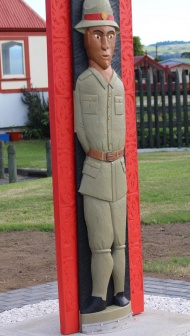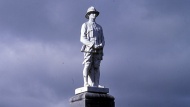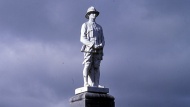Thermal area and suburb of Rotorua city, on the shores of Lake Rotorua. Ōhinemutu was a Ngāti Whakaue village before the government laid out Rotorua on the other side of Pukeroa Hill. The Tamatekapua meeting house, on Te Papaiouru marae, is named after the captain of the Arawa canoe, which brought the tribe’s ancestors from Polynesia. First opened in the centre of Ōhinemutu in 1873, the meeting house was demolished in 1939, but was rebuilt and reopened in 1943. Many of its carvings may be much older. An earlier Tamatekapua meeting house stood on Mokoia Island. The Kotahitanga (Māori parliament) met at Ōhinemutu in 1895.
Meaning of place name
Ō: place of; hine: girl; mutu: cut off. The chief Ihenga, who discovered Lake Rotorua, was married to Hinetekakara, the daughter of Kahumatamomoe, and they had a daughter called Hinetekakara. She was captured and murdered, and her entrails were cast into the lake. Ihenga searched frantically for her, and when he found her intestines caught on a snag at the edge of the lake, he set up a memorial stone that he named Ōhinemutu (The place of the only girl, or The girl cut off.)




